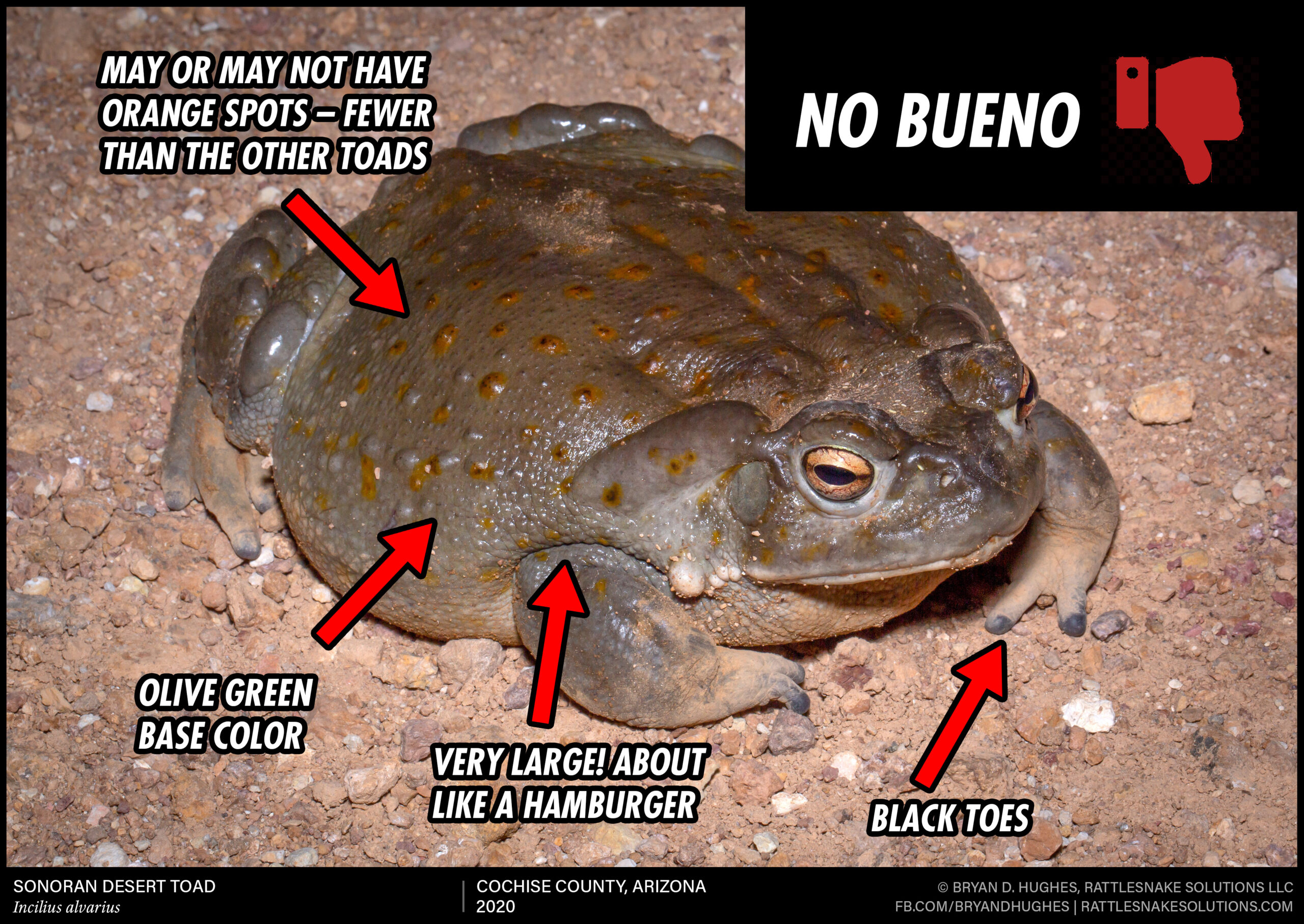
If you live in Arizona, you’ve probably heard how dangerous toads can be to dogs. If your pup chews on the wrong one, it can lead to severe distress or even death.
But, how do you know which toad to watch out for? In the Phoenix area, the 5 most commonly seen toads are often confused for one another. And of course, that’s ok – you’re a dog owner, not a toad expert. So, here’s the easy guide to differentiate between the good guys and the dangerous ones. Then, a note on what you can do about it to keep everyone safe.
We’ll start with the harmless ones to help your logical brain form a proper, fear-free identification.
First, perhaps the most commonly-seen toad in the county, the Red Spotted Toad. They are everywhere, and not something to worry about.
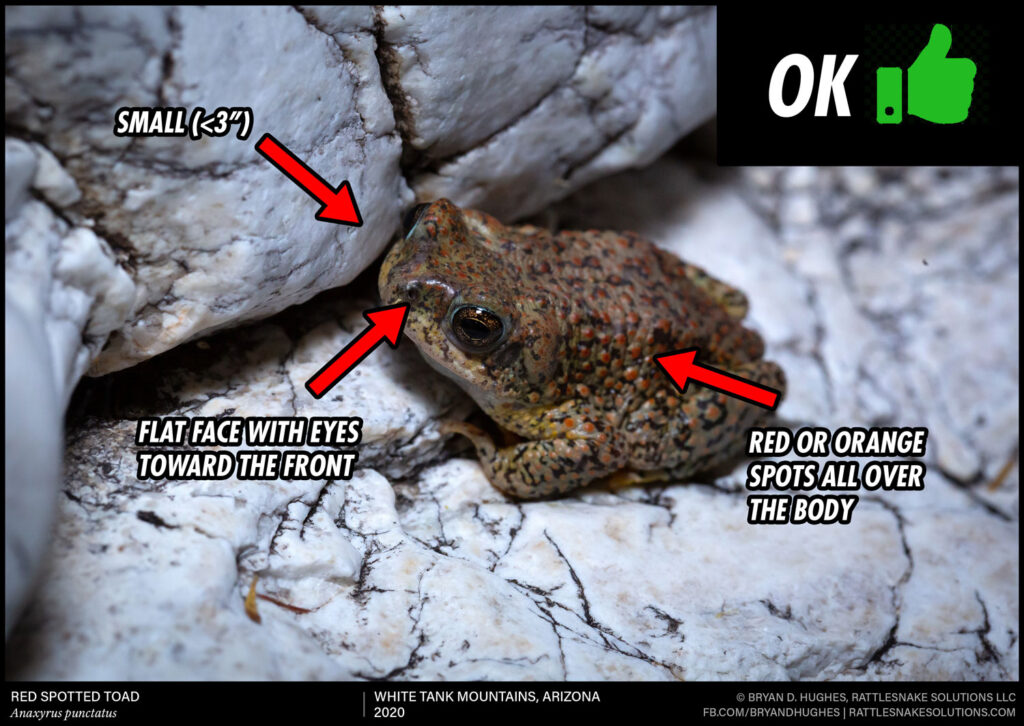
Next up: the Woodhouse’s Toad. They can pop up anywhere the others can, but seem to be more commonly associated with neighborhoods that border agricultural areas. If your dog chews on one, it could emit a toxin that might make your dog drool and possibly throw up … but is not a danger. If anything, I might speculate that a bad experience with a gross-tasting toad might even help give your dog some context to avoid chewing on the next one it sees.
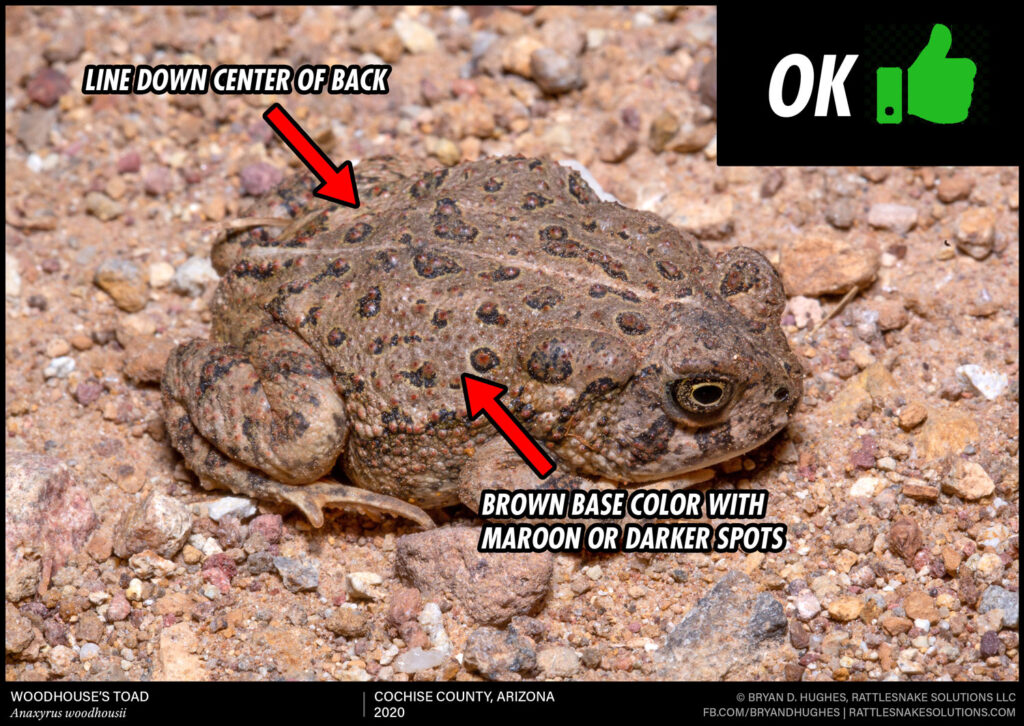
Very similar in appearance to the Woodhouse’s Toad is the Great Plains Toad. It’s a stout-looking toad with a more reticulate, blotched pattern than the Woodhouse, but also often has a light colored stripe down the back. They have always looked, to me, to be the grumpiest of all toads.
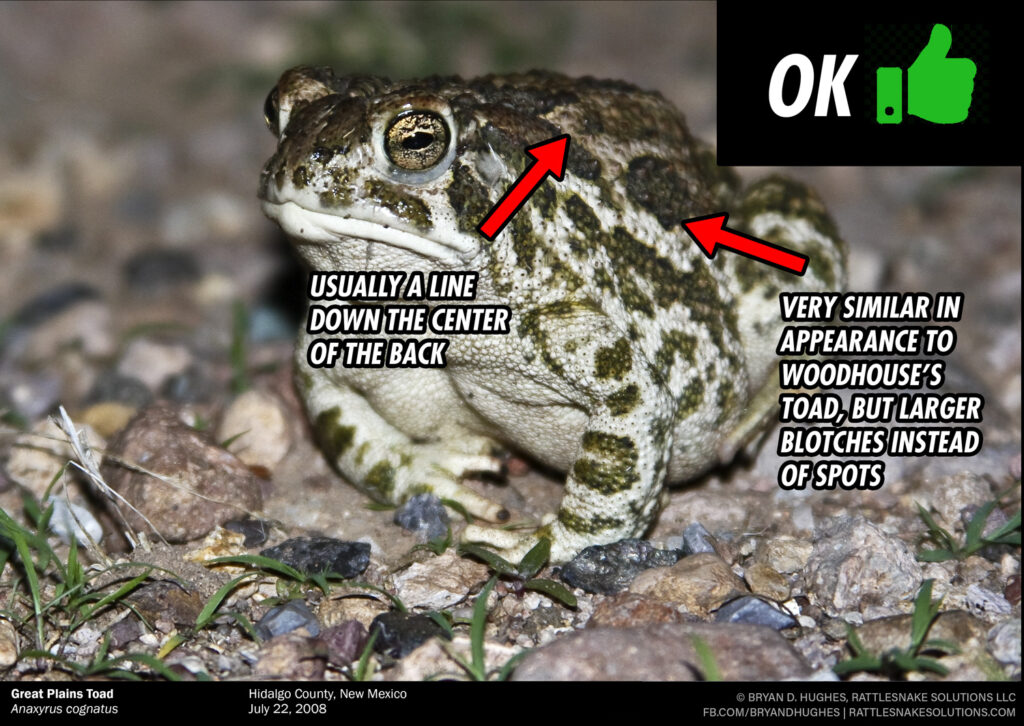
Not as commonly seen, especially outside of the monsoon season, are these bright green, cat-eyed toads: Couch’s Spadefoot. These cute little guys are not a danger.
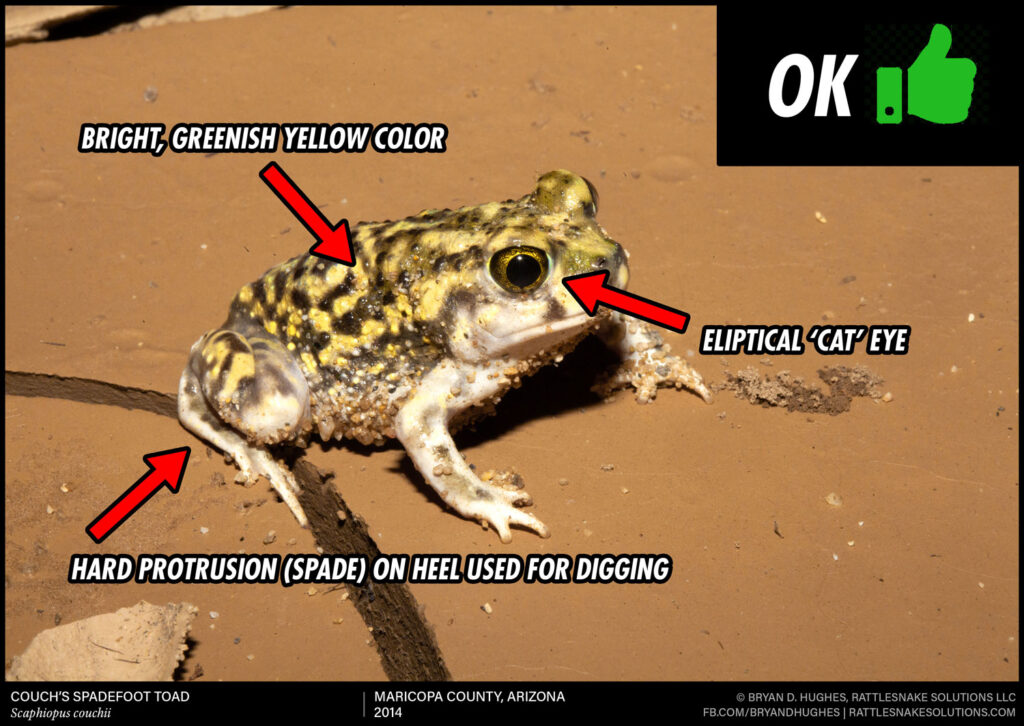
Last but not least: the toad that you should absolutely not let your dog near. This is the Sonoran Desert Toad (or Colorado River Toad, as it is also referred to). These large toads, when under attack, will secrete a poison that can severely injure or kill a dog.
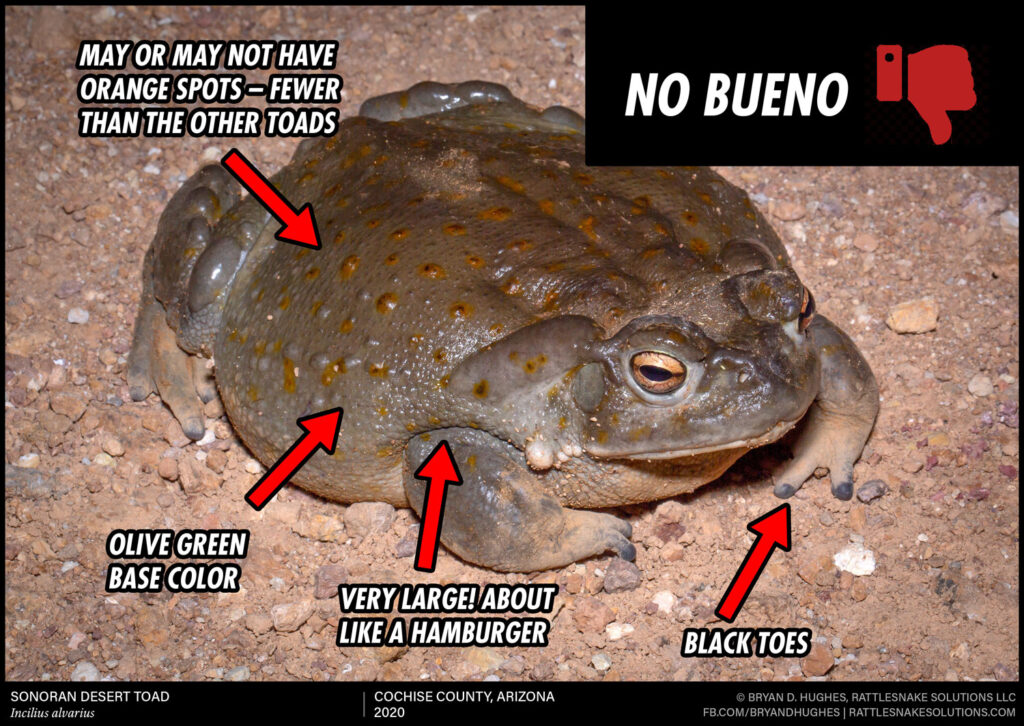
What do you do if you find a toad in your yard?
- First, figure out what it is. If you’re not sure, you can send it to our team via email at id@rattlesnakesolutions.com or text a picture to 4806943020.
2. If it’s a harmless one, just leave it there and go on to step #4.
3. If it’s a Sonoran Desert Toad (the poisonous kind). You can move it elsewhere, then just wash your hands. Or you can call someone to remove it.
4. However, you really need to investigate to figure out why it’s there to begin with, and change that situation if you can. Even if you find one of the harmless toads listed here, it can be an indication that there is moisture nearby that can also bring in the big, poisonous toads.
